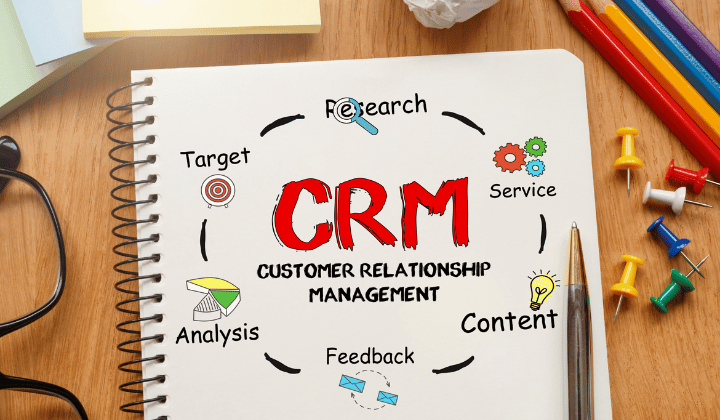Welcome to the world of Salesforce CRM! Whether you’re a small business owner or a corporate executive, understanding the basics of this powerful customer relationship management platform is essential for success in today’s digital landscape. In this article, we’ll delve into everything you need to know about Salesforce CRM.
Salesforce is not just a CRM; it’s a comprehensive platform that streamlines and automates various aspects of your business, from sales and marketing to customer service and analytics.
With its user-friendly interface and robust features, Salesforce provides organizations with the tools they need to drive growth, increase productivity, and enhance customer satisfaction.
Throughout this article, we’ll explore the key components of Salesforce, including lead management, opportunity tracking, contact management, and reporting. We’ll also delve into its customizable features, integrations, and cloud-based infrastructure, which ensure accessibility and scalability.
So, whether you’re a newcomer to Salesforce or looking to expand your knowledge, join us as we uncover the basics of Salesforce and discover how it can revolutionize your business.
Get ready to take your customer relationships to new heights with Salesforce CRM!
What is Salesforce CRM?
Salesforce CRM, or Customer Relationship Management, is a cloud-based software solution that helps businesses manage their customer interactions, sales processes, and marketing campaigns.
It allows companies to store and organize customer data, track leads and opportunities, automate workflows, and generate insightful reports. Salesforce is known for its flexibility and scalability, making it suitable for businesses of all sizes and industries.
Salesforce offers a range of features and functionalities designed to improve customer relationships and drive business growth. From lead management and contact tracking to pipeline management and analytics, Salesforce provides a 360-degree view of your customers and helps you make data-driven decisions.
Benefits of using Salesforce CRM
Implementing Salesforce CRM offers numerous benefits for businesses. Firstly, it centralizes customer data, providing a single source of truth for your entire organization. This ensures that everyone has access to up-to-date and accurate customer information, allowing for better collaboration and coordination across teams.
Secondly, Salesforce automates time-consuming manual tasks, such as data entry and reporting, freeing up your team’s time to focus on more meaningful activities. By automating workflows and streamlining processes, Salesforce improves operational efficiency and productivity.
Another key benefit of Salesforce CRM is its ability to enhance customer satisfaction. With a 360-degree view of each customer, you can personalize interactions, offer tailored solutions, and provide a seamless customer experience. This leads to increased customer loyalty, repeat business, and positive word-of-mouth referrals.
Key features of Salesforce CRM

Salesforce CRM offers a wide range of features that empower businesses to manage their customer relationships effectively. Here are some key features you can expect from Salesforce:
1. Lead Management:
Salesforce allows you to capture and track leads, assign them to sales representatives, and nurture them through the sales funnel. You can automate lead scoring, prioritize leads based on predefined criteria, and ensure timely follow-ups.
2. Opportunity Tracking:
With Salesforce, you can track and manage your sales opportunities from initial contact to closure. You can easily view the stage of each opportunity, track associated activities and interactions, and forecast revenue.
3. Contact Management:
Salesforce enables you to store and manage detailed customer profiles, including contact information, communication history, and preferences. You can segment your contacts based on various criteria and personalize your interactions based on their specific needs.
4. Reporting and Analytics:
Salesforce provides robust reporting and analytics capabilities, allowing you to gain valuable insights into your sales, marketing, and customer service activities. You can create custom reports, dashboards, and charts to track key metrics and monitor performance.
5. Workflow Automation:
Salesforce allows you to automate repetitive tasks and streamline your business processes. You can create workflows to trigger actions based on predefined rules, such as sending automated emails, updating records, or assigning tasks.
6. Mobile Accessibility:
Salesforce is accessible from any device, including smartphones and tablets. This enables your team to access and update customer information on the go, collaborate remotely, and stay connected with customers at all times.
Salesforce CRM pricing and editions
Salesforce CRM offers different pricing plans and editions to cater to the diverse needs of businesses. Salesforce´s pricing structure is based on a subscription model, with different features and functionality available at each tier. Here are the main editions of Salesforce:
1. Salesforce Essentials:
This edition is designed for small businesses and startups. It offers basic CRM functionality, including lead and contact management, opportunity tracking, and email integration.
2. Salesforce Professional:
The Professional edition provides additional features such as mass email, campaign management, and customizable reports and dashboards. It is suitable for growing businesses that require more advanced CRM capabilities.
3. Salesforce Enterprise:
The Enterprise edition offers enhanced customization options, workflow automation, and advanced analytics. It is recommended for larger organizations with more complex sales and marketing processes.
4. Salesforce Unlimited:
The Unlimited edition provides unlimited customization options, advanced API integration, and 24/7 support. It is ideal for enterprise-level businesses with complex requirements and a large user base.
How to set up Salesforce CRM for your business

Setting up Salesforce CRM for your business can be a straightforward process if you follow the right steps. Here’s a step-by-step guide to help you get started:
1. Define your goals:
Before implementing Salesforce, clearly define your business goals and objectives. Determine what you want to achieve with the CRM system and how it aligns with your overall business strategy.
2. Plan your implementation:
Create a detailed implementation plan that outlines the steps, timeline, and resources required to set up Salesforce. Consider factors such as data migration, user training, and integration with existing systems.
3. Customize your Salesforce instance:
Customize Salesforce to fit your specific business needs. Configure fields, layouts, and workflows to match your processes and terminology. Set up user roles and permissions to ensure data security and access control.
4. Import and clean your data:
Import your existing customer data into Salesforce and clean it to ensure accuracy and consistency. Deduplicate records, validate contact information, and organize data in a logical structure.
5. Train your users:
Provide comprehensive training to your team to ensure they understand how to use Salesforce effectively. Train them on basic navigation, data entry, reporting, and any specific features relevant to their roles.
6. Test and refine:
Conduct thorough testing of your Salesforce implementation to identify any issues or areas for improvement. Gather feedback from users and refine your setup based on their input.
7. Go live and monitor:
Once you’re confident in your setup, go live with Salesforce. Monitor its performance, gather user feedback, and make necessary adjustments to optimize its usage.
Customizing Salesforce CRM to fit your needs
One of Salesforce CRM’s greatest strengths is its ability to be customized to meet the unique needs of your business. Here are some ways to customize and optimize Salesforce to meet your specific needs:
- 1. Create custom fields and objects: Salesforce CRM allows you to create custom fields and objects to capture additional data specific to your business. Whether it’s a custom product field or a unique customer attribute, you can extend the standard functionality of Salesforce CRM to suit your needs.
- 2. Build custom workflows: Use Salesforce CRM’s workflow automation capabilities to create custom workflows that align with your business processes. Automate repetitive tasks, enforce business rules, and streamline your operations.
- 3. Develop custom reports and dashboards: Salesforce CRM provides powerful reporting and analytics tools that enable you to create custom reports and dashboards. Build visualizations that reflect your specific metrics and KPIs, allowing you to monitor performance and make data-driven decisions.
- 4. Integrate with third-party apps: Salesforce CRM offers a wide range of integrations with third-party applications, allowing you to extend its functionality. Whether it’s integrating with your email marketing tool or connecting with your accounting system, you can enhance the capabilities of Salesforce CRM by integrating with other tools and systems.
- 5. Use AppExchange: AppExchange is Salesforce’s marketplace for pre-built applications and integrations. Explore the vast library of apps and solutions to find ones that meet your specific needs. From project management tools to marketing automation software, AppExchange offers a wide range of options to enhance your Salesforce CRM experience.
Integrating Salesforce CRM with other tools and systems

Salesforce can be seamlessly integrated with a variety of tools and systems to enhance its functionality and streamline your business processes. Here are some popular integrations you can consider:
1. Email Marketing Integration:
Integrate Salesforce with your email marketing tool to sync contacts, track email interactions, and automate email campaigns. This integration allows you to have a unified view of your customer interactions across channels.
2. Marketing Automation Integration:
Connect Salesforce CRM with a marketing automation platform to streamline lead nurturing, campaign management, and lead scoring. This integration enables you to automate marketing processes and align your sales and marketing efforts.
3. Customer Service Integration:
Integrate Salesforce with your customer service software to provide a seamless experience for your support team. This integration allows for efficient case management, ticketing, and customer communication.
4. Accounting Integration:
Connect Salesforce CRM with your accounting system to streamline the sales-to-payment process. This integration ensures accurate and timely invoicing, financial reporting, and revenue recognition.
5. Collaboration Integration:
Integrate Salesforce with collaboration tools like Slack or Microsoft Teams to foster better communication and collaboration across your organization. This integration enables real-time sharing of customer information, updates, and discussions.
Salesforce CRM best practices
To make the most of Salesforce CRM, it’s important to follow best practices that ensure its effective usage and adoption. Here are some best practices to consider:
1. Define clear processes:
Clearly define your sales, marketing, and customer service processes and align them with Salesforce. Standardize workflows, naming conventions, and data entry guidelines to ensure consistency and accuracy.
2. Keep data clean and up-to-date:
Regularly clean and update your data to maintain its accuracy and reliability. Deduplicate records, validate contact information, and enforce data hygiene practices to improve the quality of your data.
3. Train and empower users:
Provide comprehensive training to your users to ensure they understand how to use Salesforce CRM effectively. Empower them to be self-sufficient by providing access to training resources, FAQs, and user forums.
4. Continuously improve and optimize:
Regularly review and optimize your Salesforce CRM setup based on user feedback and changing business requirements. Stay updated with new features and enhancements released by Salesforce and explore how they can benefit your organization.
5. Leverage Salesforce support and resources:
Take advantage of Salesforce’s extensive support and resources to maximize your CRM experience. Access documentation, online training, webinars, and user communities to stay informed and connected with the Salesforce community.
Training and resources for Salesforce CRM users

Salesforce provides a wide range of training and resources to help users effectively utilize Salesforce. Whether you’re a beginner or an advanced user, there are resources available to enhance your skills and knowledge. Here are some training options and resources:
1. Trailhead:
Trailhead is Salesforce’s free online learning platform that offers interactive, self-paced training modules. It covers various topics and skill levels, allowing users to earn badges and certifications as they progress.
2. Online training:
Salesforce offers instructor-led online training courses for different roles and skill levels. These courses provide hands-on experience and practical knowledge to help users master Salesforce CRM.
3. Webinars and events:
Salesforce regularly hosts webinars and events where users can learn from experts, hear success stories, and stay updated with the latest industry trends. These events provide valuable insights and networking opportunities.
4. Salesforce Help and Documentation:
Salesforce provides comprehensive documentation and help resources that cover all aspects of Salesforce CRM. Users can access guides, articles, release notes, and FAQs to find answers to their questions.
5. User communities:
Salesforce has a vibrant user community where users can connect, share best practices, and ask questions. Join user groups, participate in discussions, and learn from the experiences of other Salesforce CRM users.
Conclusion
Salesforce CRM is a powerful platform that can revolutionize the way you manage customer relationships and drive business growth. From its robust features and customizable options to seamless integrations and extensive training resources, Salesforce provides businesses with the tools they need to succeed in today’s competitive landscape.
By understanding the fundamentals of Salesforce CRM and following best practices, you can realize your full potential and take your customer relationships to new heights. Whether you’re a small business owner or a corporate executive, Salesforce gives you the scalability, flexibility, and insights you need to thrive in the digital age.
To maximize these benefits, consider OCS – Org Cost Savings. Our consulting services specialize in optimizing Salesforce licenses, ensuring efficiency and cost reduction.
Elevate your Salesforce experience with OCS. Explore our experience and enjoy the full potential of Salesforce CRM for your business.







Excellent blog here Also your website loads up very fast What web host are you using Can I get your affiliate link to your host I wish my web site loaded up as quickly as yours lol
Thank you. Hostinger.
Thank you for the auspicious writeup It in fact was a amusement account it Look advanced to more added agreeable from you By the way how could we communicate
Thank you for your comment.
I’ve carefully considered the arguments presented here, but I find certain aspects unconvincing.
Thank you for your comment.